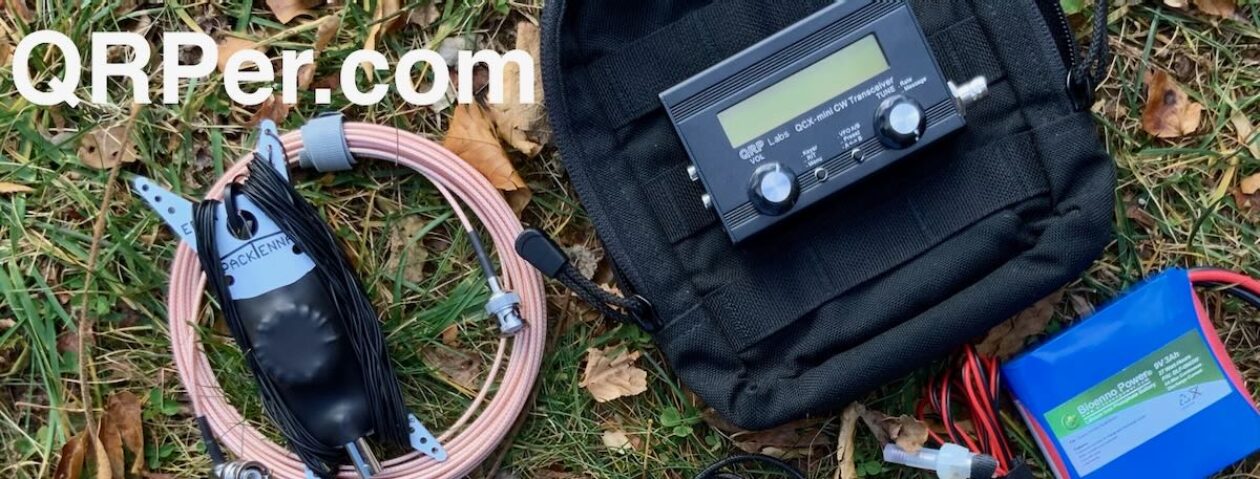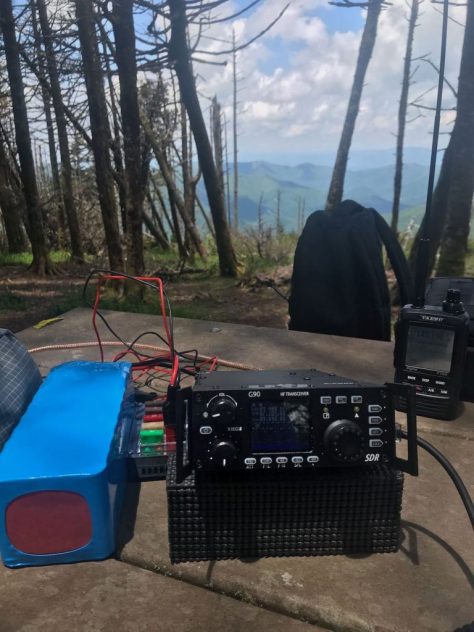If you’d like to participate in a contest that balances the playing field between fixed, high-power stations and QRP portable stations, you might take a look at the 2nd annual Portable Operations Challenge.
The POC will take place September 4-5 during three, 4 hour periods. The exchange is very simple: your 4 character Maidenhead Grid Square. You can even combine this event with a scheduled summit or park activation.
This contest even includes prizes for the winners.
Check out the POC webpage for full details. I’ve pasted details from the POC page below:
PORTABLE OPS CHALLENGE
The Fox Mike Hotel Portable Operations Challenge is designed to optimize equal operating conditions for portable operating during a contest involving non-portable stations. The scoring allows and encourages regular home-based station operations to take part while offering a handicap-style scoring algorithm to be more equalized for portable stations. The approach is akin to the handicap index in the sport of golf. More difficult courses are scored with a higher slope value, indicating a greater challenge to achieve a normal par score of 72 on that course with a handicap of subtracting strokes for golfers who do not typically shoot as low a score as other golfers. A number of factors go into deriving the slope rating for a golf course but they represent the challenge that the course presents to each participant golfer and the golfer’s capability for playing the course.
The POC aims to make portable operations “on par” with more typical fixed-based operations while preserving the enjoyment of being in a new operating environment. Moreover, fixed-based operators can also easily participate in the action, challenging the handicapped-scoring for portable ops. Can the Super Station contester best the Little Pistol portable operation? If we use a scoring metric that reduces the advantages of fixed stations to that of pure radio sport operating, is there a chance that an efficient portable operator or team can come out ahead of the current winning contest station operators? That’s why this is called the Portable Operations Challenge!
Frank K4FMH
THEORY OF THE CONTEST SCORING FACTORS
Several aspects of fixed (permanent)-station contesting can be stacked in the operator(s) favor when compared to most portable operations. One is the use of greater RF power output. Another is a permanent tower with directional, gain producing beams. A third is that it is easier to have multiple transceivers and operators, allowing for a “per-transmitter production” that yields superior scores. A fourth is the mutual attractiveness for fixed-station ops to work other fixed-station ops and ignore the weaker (especially QRP) signals. The addition of having the full force of Internet communications (when allowed), spotting sources, better ergonomics for operating positions, food/drink conveniences, and climate-controlled shelter all add-up to give “course advantages.”
While some portable operations (an example can be some large Field Day teams) can meet or exceed the advantages to contesting identified above, the vast majority do not.
Our scoring metric equalizes some of these advantages. Four factors are used in scoring each contest operation submission. These are the same regardless of whether it is a single operator or a team of operators, unassisted or assisted through the use of operation spotting. These include:
a. Kilometers-per-watt (KPW). Using the Maidenhead Grid Square, the distance in miles divided by the reported power output in watts for the reporting contest participant.
b. Fixed (permanent) vs Portable operation (favoring portable).
c. Mode of contact: Phone vs. CW vs. Digital (favoring phone over CW over digital)
d. Number of transmitters in use (points X 1/t where t = # transmitters)
The logic underlying this metric is as follows:
The KPW metric will tend to equalize power used as well as antenna gain. The km-per-watt is computed per-contact using the centroid lat-lon of the Maidenhead grid square exchanged during the contact. Favor goes to the greater miles-per-watt which equalizes to some degree the antenna gain, power, and point-to-point propagation conditions. The MPW is the basic contact score. Fixed (permanent) station operators have their resident setup which gives an advantage over portable ops, although a team could replicate a Field Day setting with portable crank-up towers, amps, generators, and so forth. Favor goes to the portable operator. The amount of this multiplier can be adjusted much as a competitive “tuning parameter” in future contests.
All things being equal in a QSO, phone is most challenging, followed by CW and then digital (especially weak signal modes like FT8). Favor goes to phone first, CW second, and digital third.
The more transmitters shape the number of contacts so more transmitters get increasing decrements in the points awarded, regardless of the number of ops. This emphasizes the per-transmitter production rather than just the amount of equipment and number of operators. We are experimenting with what seems appropriate discounts for the number of transmitters in simultaneous so as to render a more equitable competition, favoring sport over equipment.
POC DATES
SEPTEMBER 4-5, 2021
CONTEST OBJECTIVE:
For portable and fixed stations to work as many other portable and fixed stations as possible during the contest
period.
CONTEST PERIOD:
The contest consists of three individual and separate 4-hour periods on September 4 & 5, 2021 UTC.
The sessions are:
Session 1: 0800 – 1159 September 4, 2021 UTC
Session 2: 1600 – 1959 September 4, 2021 UTC
Session 3: 0000 – 0359 September 5, 2021 UTC
Stations may be worked once per band and mode by session for a maximum of 15 contacts between stations per session. Duplicate contacts will be removed without penalty. Scoring will be done by each individual session. Participants may operate one, two or all three sessions. Overall champion will be determined by aggregating scores from the three separate sessions. The Individual with the highest aggregated score will be crowned Grand Champion. The single station with the longest distance in KM per watt will be the Distance Champion.
BANDS:
80, 40, 20, 15 and 10 meters
MODES:
CW, Phone (SSB), and Digital
Digital mode is any data mode that can transmit the required contest exchange. Cross mode contacts are not permitted.
EXCHANGE:
4-character Maidenhead grid square
SCORING:
Total score for the session is the sum of all QSO Values.
See Rules Document for official details.



















































































